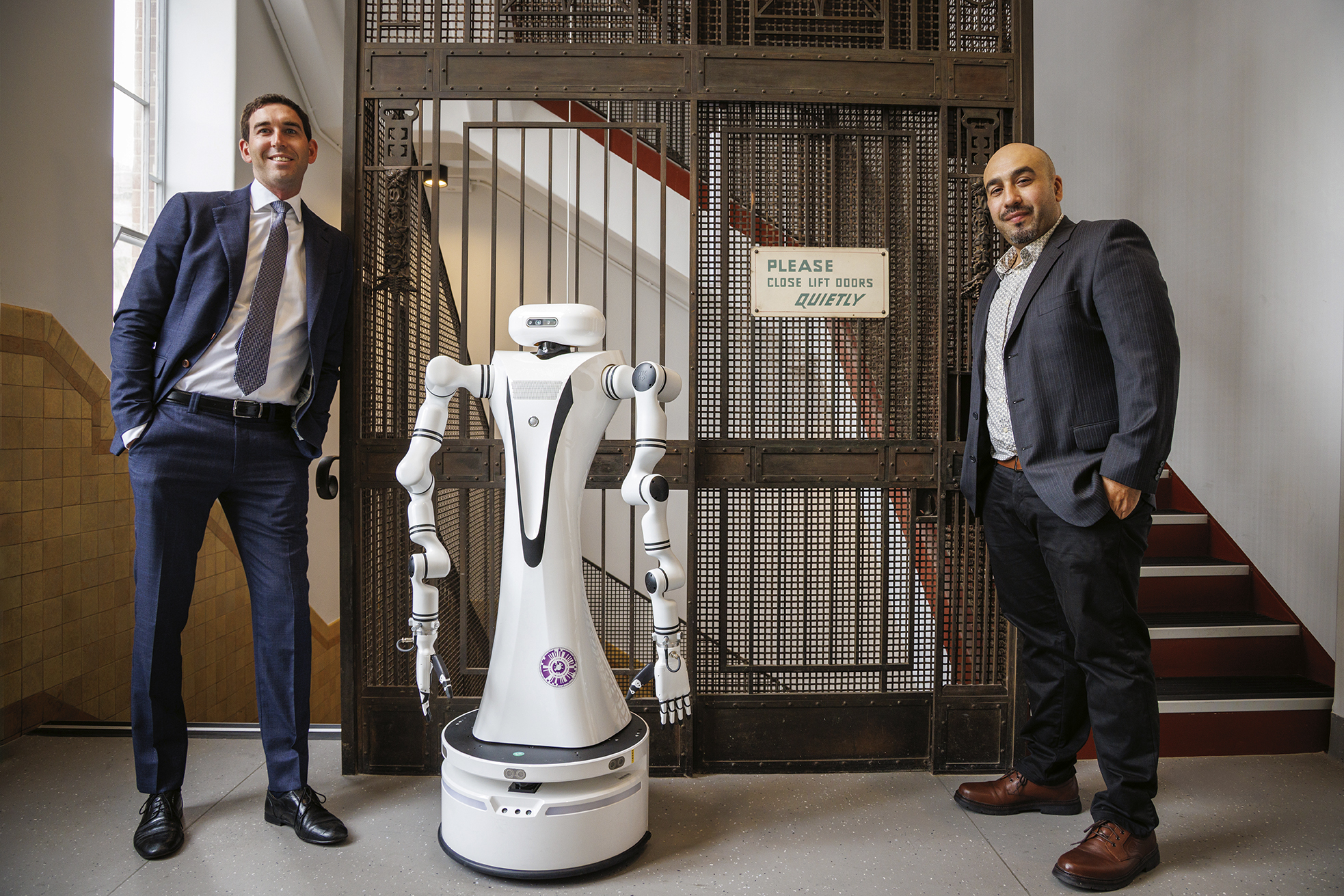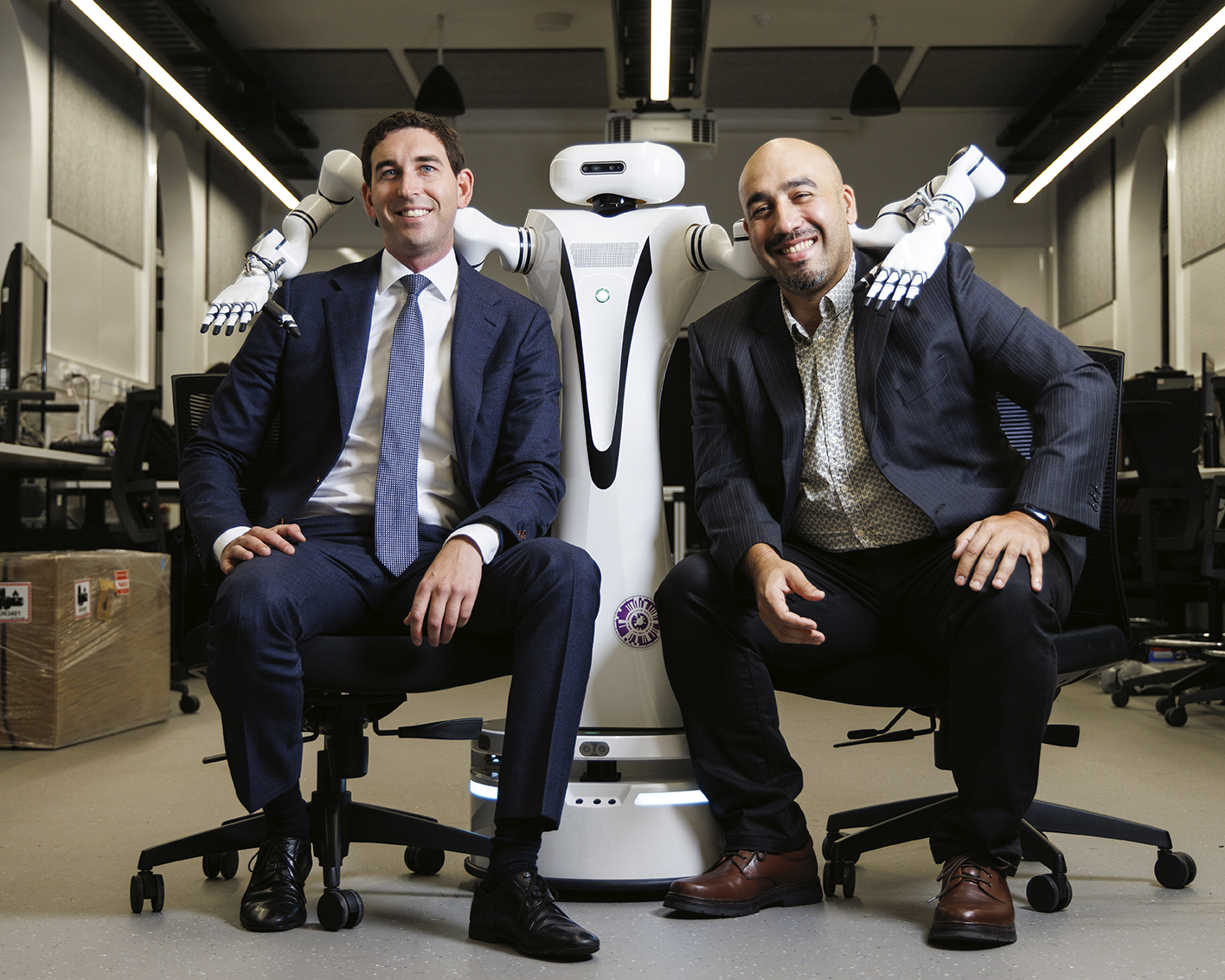The collab bridging the robot-human language gap
Posted August 25, 2025

The sophistication and application of autonomous systems is accelerating at an exponential rate transforming how we move, work, and interact with the world and people around us.
Even this article has been brought to you with the help of a speech-to-transcription service that uses machine learning technology to transcribe spoken words into text in real-time. And while it’s not pitch-perfect in accurately interpreting language, it does a more than admirable job in documenting discussions and summarising key points.
As humans become more reliant on autonomous systems and artificial intelligence – whether consciously or not – how do we make machines more reliable and their interactions more human-centric?
How do we ensure that an autonomous car or plane will respond to our instructions and get us to our destination safely?
Or that an assistive robot for the elderly and disabled can communicate with its clients in a more human-like way?

Human-machine collaboration
Enhancing this human-machine collaboration is the focus of research at Lot Fourteen between MITRE, a not-for-profit research and development organisation in the U.S., and the University of Adelaide’s Australian Institute for Machine Learning (AIML). AIML operates at the cutting-edge of AI research and has developed several avenues to facilitate the transfer of that knowledge between Australia and the US.
The research builds on a partnership signed in 2022 by MITRE with the University of Adelaide focussed on building Australia’s AI capabilities for future security and prosperity.
“By developing and enhancing the ability of autonomous systems, such as robots, drones, and self-driving cars, to interpret their environment using sensory data, we can help them interact with the world in a more human-like way,” MITRE Australia’s Centre for Integrity and Defence Leader Jonathon Wotton says.
“This will help systems become more intuitive, safe, and capable of working alongside humans, improving both the efficiency of their operations and the quality of their interactions with people.
“We’re not there in some ways and this research will hopefully help to solve that challenge.”
The 18-month research project will be conducted at AIML in Adelaide.
Embedded AI and robotics
Leading the research is embedded AI and robotics expert Dr Feras Dayoub. Dr. Dayoub’s work is dedicated to advancing the reliable deployment of computer vision and machine learning on mobile robots in real-world environments, allowing them to understand situations and interact with them appropriately.
“The outcome of the research with MITRE is to get a robot to explain what it does, what it did or didn’t do, or what it is going to do and provide that information in a more natural way that the user understands,” said Dr Dayoub, a senior lecturer at AIML.
“When a robot is deployed in real conditions sometimes things don’t go as planned. There will be lots of variations [and] sometimes a task might fail because of obstacles in the way of sensors, or the environment might change.
AIML will run the experiments on a robot, DART, or dual armed robot, (pictured), at its lab. The partnership between AIML and MITRE includes knowledge and data transfer and will allow AIML’s research to be trialled on sophisticated autonomous systems in MITRE’s extensive lab and research facilities in the U.S.

State-of-the-art test facilities
The MITRE MASE (Multidisciplinary Autonomous Systems Evaluation) Lab in Virginia, U.S, has a Jeep fitted with sensors, analytic and data recorders, and powerful computer processors to test and document new autonomous technologies. The facilities have also been designed to test for real-world challenges such as sensor malfunctions or unexpected obstacles.
MITRE also has a state-of-the-art, indoor maritime test facility called the MITRE BlueTech Lab in Massachusetts while the MITRE National Range in Virginia is dedicated to testing uncrewed aircraft systems.
“We get the value of taking the software and putting it into the hardware and doing some really cool stuff,” Wotton says.
By testing AIML’s framework in these labs, MITRE can identify vulnerabilities and fine-tune the system’s performance before it is deployed in the field, ensuring that the autonomous system performs reliably, safely, and predictably under diverse conditions.
“The outcomes of the research will grow the AI capabilities for both organisations and their government partners,” Wotton says.
“Our research advances novel and cost-effective solutions to government challenges—from national security and transportation safety to cyber defence,” he says. “We share what we discover. It’s part of our public interest mission.”
The company’s technology transfer program puts innovative solutions in the hands of government and industry, as well as the global security community and academia. This knowledge-sharing commitment expedites impact in the public and private sectors.
“The AIML-MITRE partnership allows us to jointly transition technology solutions and prototypes, which can translate into safety improvements–and ultimately save lives,” Wotton adds
“If the research unveils potential vulnerabilities, they can be incorporated into MITRE’s various publicly available, open-sourced frameworks, such as MITRE ATT&CK® and MITRE ATLAS, which provide tools and methodologies to help organisations, particularly governments, respond in a more proactive and comprehensive way,” Wotton says.
Future applications for research
- 1. Advanced aviation and transport: fully autonomous vehicles, intelligent AI co-pilots, route planning and optimisation.
- 2. Space: autonomous navigation and exploration, robotic mining.
- 3. Health: surgical robotics, assistive robots for elderly and disabled, medical triage, logistics and delivery, precision medicine.
- 4. Advanced manufacturing: workforce empowerment, process optimisation, high precision automation, smart warehousing.
“By partnering with organisations like AIML, we’re able to transfer some of our leading research to Australia and grow a sort of sovereign capability whilst bringing the learnings MITRE has developed over 65 years,” Wotton says.
“Our goal is to ensure AI-enabled systems are secure, safe, trustworthy, and benefit end-users around the globe. This collaboration is key to advancing and sharing AI’s promise.”
Great things come to those who subscribe
Subscribe
"*" indicates required fields
Adelaide 5000
Developed by Frame Creative
Design by The Sideways Theory
Design by Sixth Street Design
Developed by Frame Creative
© Lot Fourteen All Rights Reserved

